Meet Our Female Silk Road Guide - Part 1
A chat with Ms Almadai about her life as a guide
April marks the start of ‘Silk Road Season’ with the first of our 23-Day Silk Road & Stans adventures all but upon us. As one of our longest running and most popular trips, we thought you might like to meet one of our two beloved female guides for Kyrgyzstan & Kazakhstan…Ms Almadai!
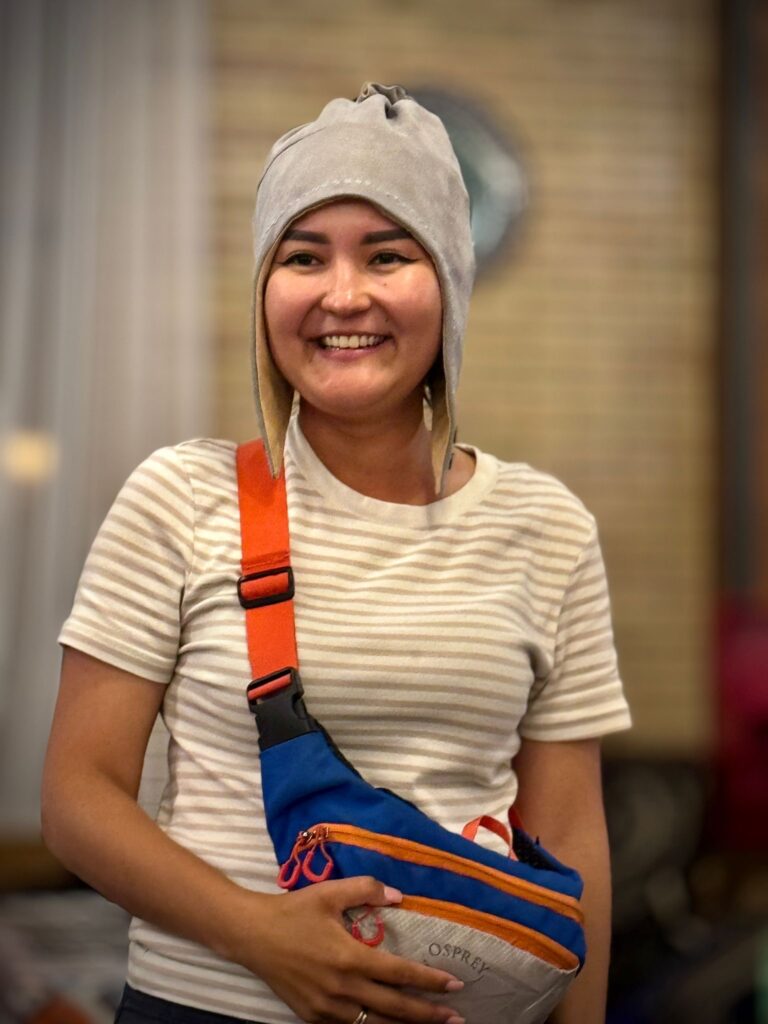
Our 2024 Patchies already know first-hand what an absolute treasure she is, so…pop your phone on silent, grab yourself a cuppa and get to know Almadai…
Tell us a little about yourself and how you first came to be a guide. What inspired you, and what training did you have to do?
I was born in Bishkek, the capital of Kyrgyzstan in 1995, and when I was in the 11th grade at school I started doing trekking and alpine tours. This was the starting point for tour companies getting to know and trust me, and when I turned 17 they gave me my first trip to guide. It was a 5-day trekking trip and was an amazing experience! I received really nice feedback from the group and that’s how I started guiding.
After school, I graduated in Humanities at University and spent 10 years translating German and English. At the same time, I was doing training courses with the tourism academy and different tour companies to become a qualified tour guide.
Is it unusual for females to be guides in the Stans and is it competitive to find work?
It’s not unusual here in Kyrgyzstan and Kazakhstan, but in Tajikistan that might be different because in the past, more men were in the tourism sphere there due to religion, and ladies were involved in raising children and homelife duties. Personally, I’ve never faced a problem in finding guiding work as the industry isn’t that big in Kyrgyzstan.
I’ve been asked many times from the beautiful ladies on my trips why I don’t stay as their guide when the group moves into Tajikistan and think that it’s more a question of time. For instance, Tajikistan and Kyrgyzstan’s relationship now is more or less good, but in the past there were issues regarding the border in terms of land and the border was closed, and it’s still an issue even nowadays.
What is safety and security like in the regions you’ll be guiding through?
All the Stans that the Patchies will be visiting are quite safe, and the remote mountain areas I’ll be guiding them through in Kyrgyzstan and Kazakhstan are super safe.
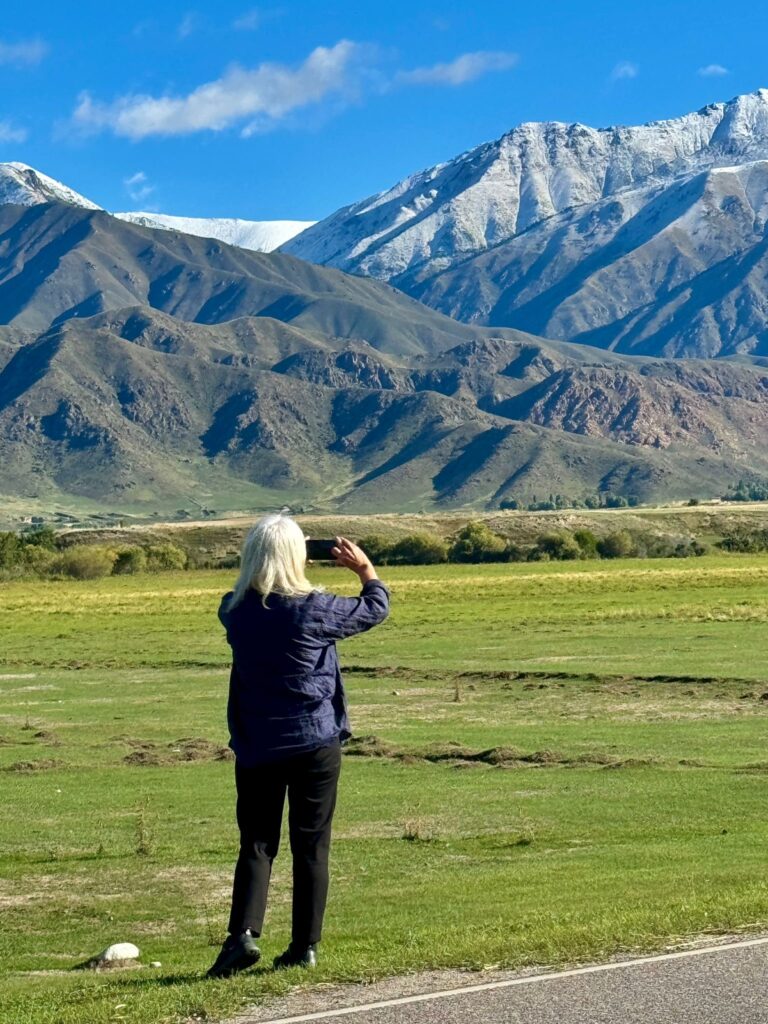
People are always interested about this before they come. Patchies often tell me that when they tell their friends and family they’re going to Uzbekistan and Kyrgyzstan they ask, ‘Why?’ and ‘Kyrgyzstan? Where the hell is that?!’ Nobody knows about these places but there’s nothing dangerous about our countries.
People are nice and Kyrgyzstan is the place of very open-hearted, very kind people so I would say there’s nothing to be worried about in regards to the security and safety. These places are really good to go to.
Kazakhstan is a whole big cosmopolitan country. The former capital city, Almaty, is like a European city. I remember one of the New Zealand Patchies last year said to me, ‘This is even better than freaking Auckland!’. Tourism here is growing very fast.
What can you share with us about the lives of women in Kyrgyzstan?
During the Silk Road times and nomadic times, women were not very open and there was a tradition known as ‘Bride Kidnapping’ where ladies were intimidated into marriage. Many women took their lives from being forced into marriages with people they didn’t know, and this was still happening in the 80s and 90s. These days, it’s done as a demonstration and is a tradition that will hopefully stay in the past.
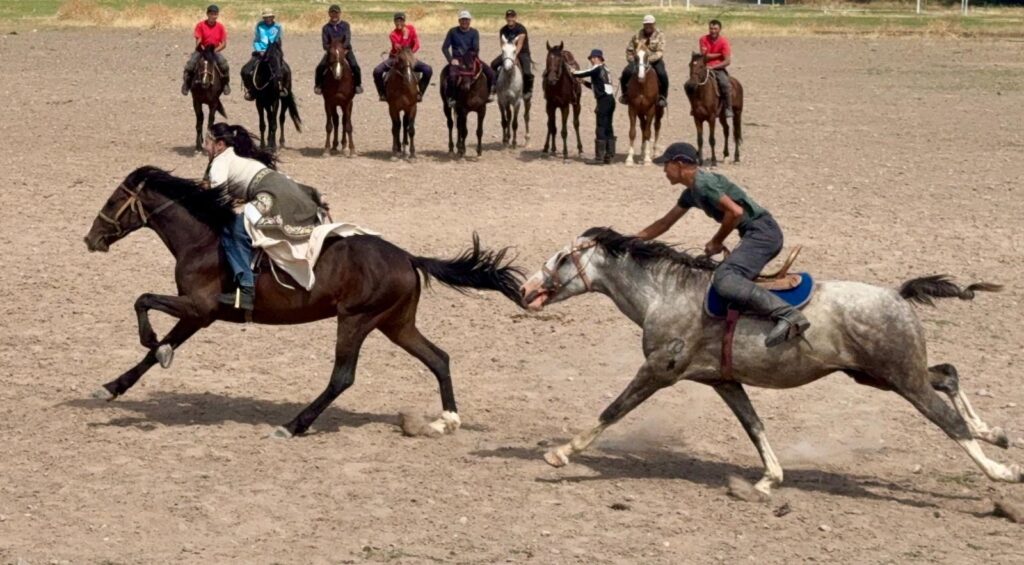
Now, women and men have rights on the same level but according to culture and mentality, the father is considered the head of the family. But this is just a formality as the boss of the family is the mother, or the grandmother! The women are happier nowadays and aren’t struggling or suffering. They are working and we have many female politicians. It’s very easy to talk and interact with local women here now and life, especially for women, is not that different from say, a western or European lifestyle.
People here in Kyrgyzstan are very sincere. They’re not showy and don’t pretend to be people they’re not – we’re nomads at heart. You’ll find the locals are very curious to meet foreigners and show them hospitality. If you make a friend here, you will make a friend for life.
What was life like growing up for you as a young woman in Kyrgyzstan?
I was born in the 90’s and that period of time was really tough not only for my own family but for all post-Soviet countries with the collapse of the Soviet Union. There was a really high level of unemployment – we weren’t living, we were surviving. It was a really difficult time in Kyrgyzstan.
Our elderly generation often speaks of times before the collapse when things were very good and people were prospering because there was enough food, it was cheap and systems were working. But then later after the disaster, the economy of Kyrgyzstan started to grow from the southern areas with the start of agriculture and cattle breeding. Exporting to neighbouring countries helped stabilize the economy.
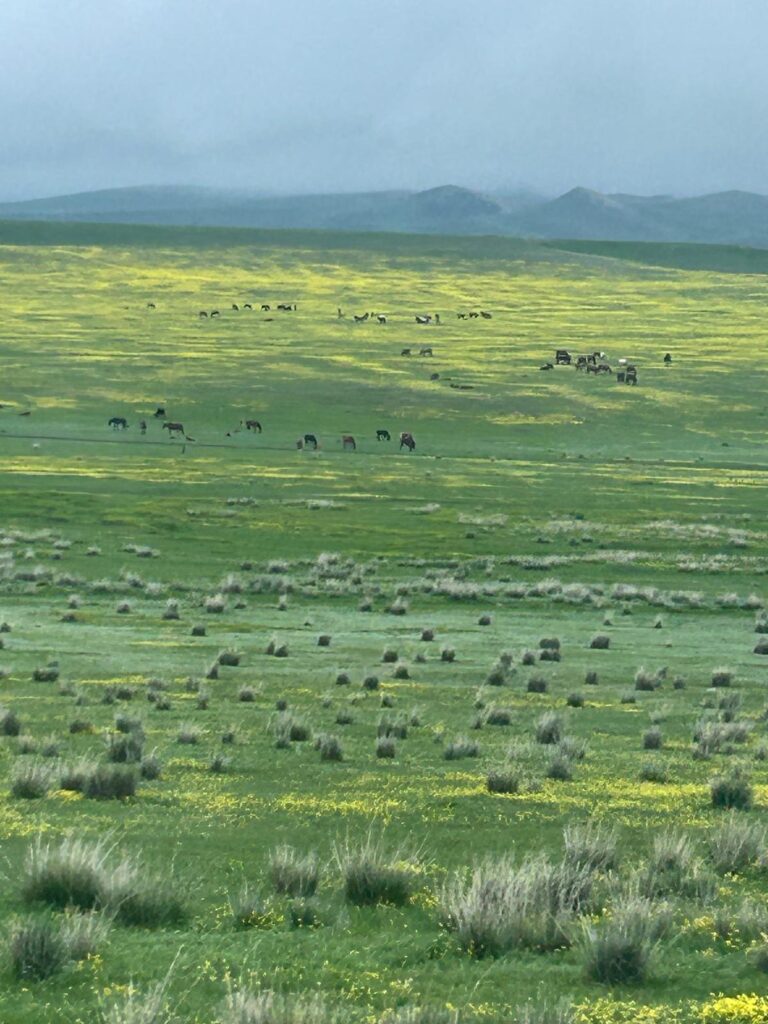
For myself and other children that grew up in the 90s, this period of time had a lot of influence on us because nowadays, my generation is considered to be very hard working, level headed and smart people, as we grew up under tough circumstances. We took care of our siblings and ourselves because our parents worked two or three jobs, so we had to grow up fast which gave us adult mindsets quite early. It was a tough time for everyone, not just women, but I only have positive things to remember.
Did you learn anything from your very first guiding trip that has helped you in your guiding career?
I would say that it was learning to understand the needs and wants of everyone in the group, even when they’re not telling you. My first trip taught me that everyone is individual and requires your attention so you need to be intuitive, to not just see but to feel how the group is going.
How do you manage the dynamic and different personalities in a group?
By being positive and asking everyone to be respectful of each other’s mindsets and character traits, but also of the people and places we’ll be visiting. This trip is about ‘girl power’, the power of supporting and understanding one another. It can be challenging sometimes, but there’s lots of activities we do along the way that unite us!
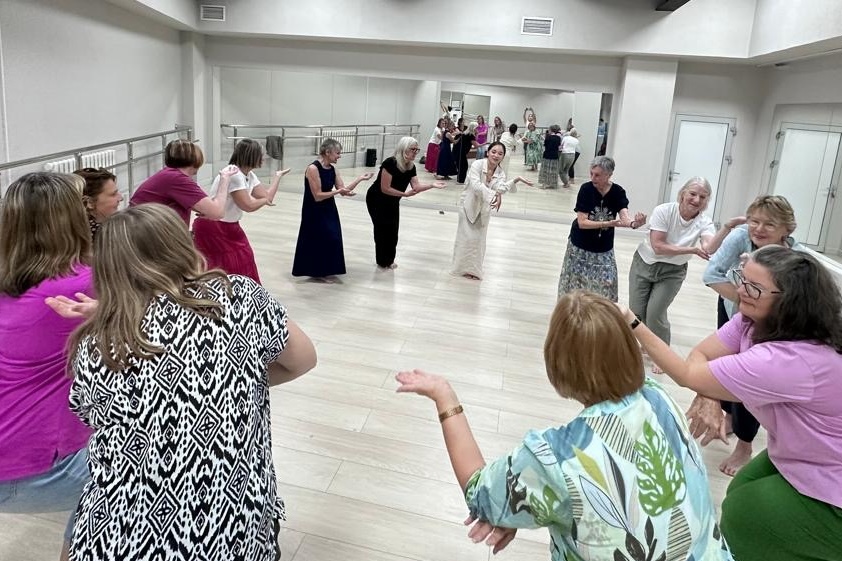
What’s it like when our Patchies get to spend time with the local women doing the various workshops and activities on this adventure?
These women are so lovely! They’re really nice and love meeting the Patchies – interacting with them, finding out things about their lives and countries.
In our culture, it’s considered impolite to ask about a ladies’ age – you’re supposed to just assume, so it becomes a funny (but at the same time) not funny situation amongst these local ladies and the Patchies when that topic comes up. Every time I visit, there is lots of laughter!
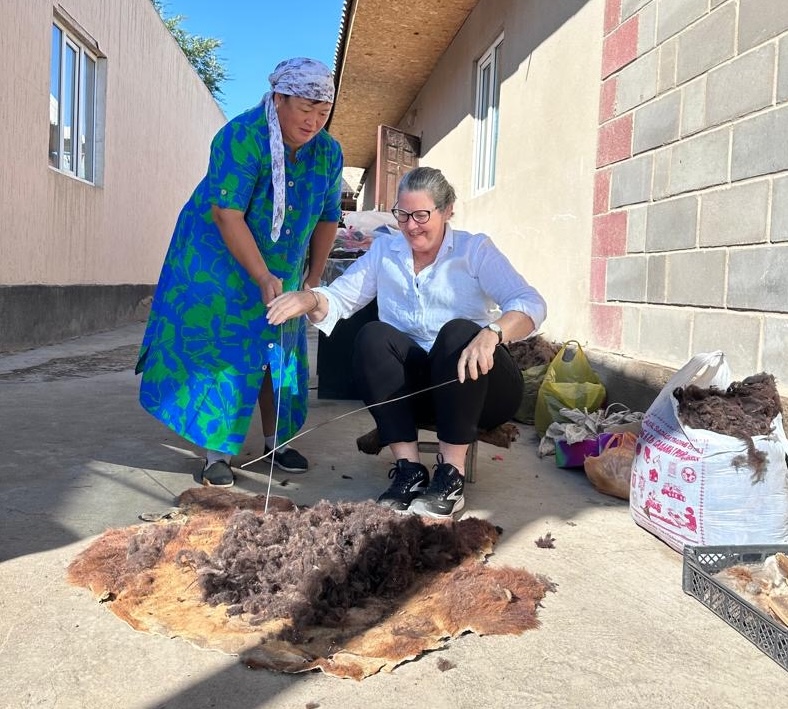
They all share in each others’ lives, wanting to know about their children, what they do for a living and opening up to one another. They discover things that they can all relate to, through sharing their experiences of life’s challenges. One lady even told me about her experience as a kidnapped bride. The stories these women and the Patchies share is female power and unites them all together and they understand each other. Sad stories, happy stories. All the ladies enjoy meeting each other.
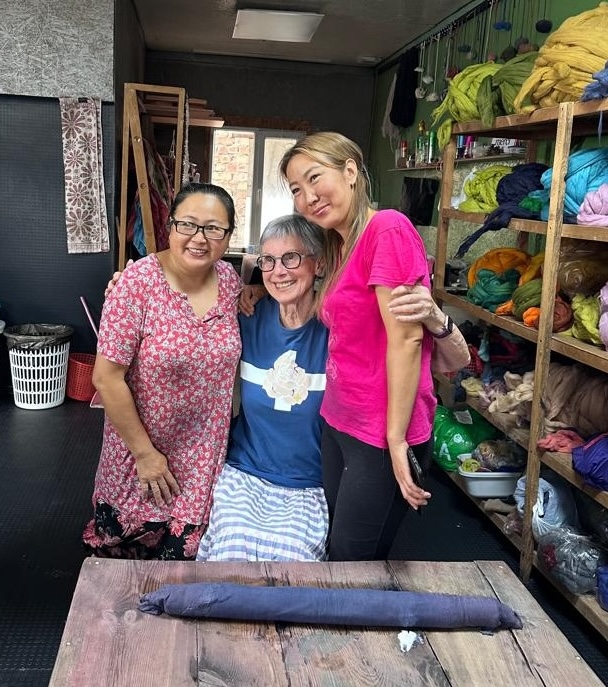
Often at the end of the trip the Patchies will start defining their favourite things from their adventure, and interacting with the local women is the number one highlight I hear on repeat!
What kind of things do you do to prepare for this adventure?
A couple of days before the Patchies arrive I go shopping and buy a little gift to give them. It’s a ‘tumar’ which is a kind of little talisman pouch. In nomadic times, you would put a little piece of bone from the snow leopard or the claw of a golden eagle in it for protection against devil spirits. It’s a very important talisman.
I also prepare a handy little laminated dictionary for each of them so they can communicate with the locals. It’s very small but has words like, ‘Goodbye’, ‘Good Evening’, ‘Bon Appetit’, ‘I love you’, ‘How are you?’, and ‘What’s your name?’ in it. It’s really fun for the Patchies to try these words and practice with the locals by themselves.
And of course, I read a lot to refresh my information about the topics the ladies and I will discuss, and the regions that we’ll go to. I also meditate – it’s good because I’ll be sharing that energy with so many wonderful ladies. Otherwise, I take some small breaks to pay attention to my three-and-a-half year old son and my husband – my second child I would say!
How do you manage being away from your family when you’re guiding?
It can be really hard sometimes – especially if I’m away and I see on the phone that my son isn’t well. But guiding is a seasonal job that doesn’t go for very long, just a couple of months so when you have a schedule, you should be working.
In the winter my husband and I have a small business renting out heavy machinery, like big tow trucks.
What do people find most surprising about the Stans that they didn’t expect?
They’re most surprised by how different the people, the landscapes and the lifestyles all are. It’s one of the things that I hear a lot.
In Kyrgyzstan and Kazakhstan, they’ll experience the nomadic style of life from people who live high up in the mountains and the natural beauty of this region. It’s quite different from what they’ll experience in Uzbekistan and Tajikistan.
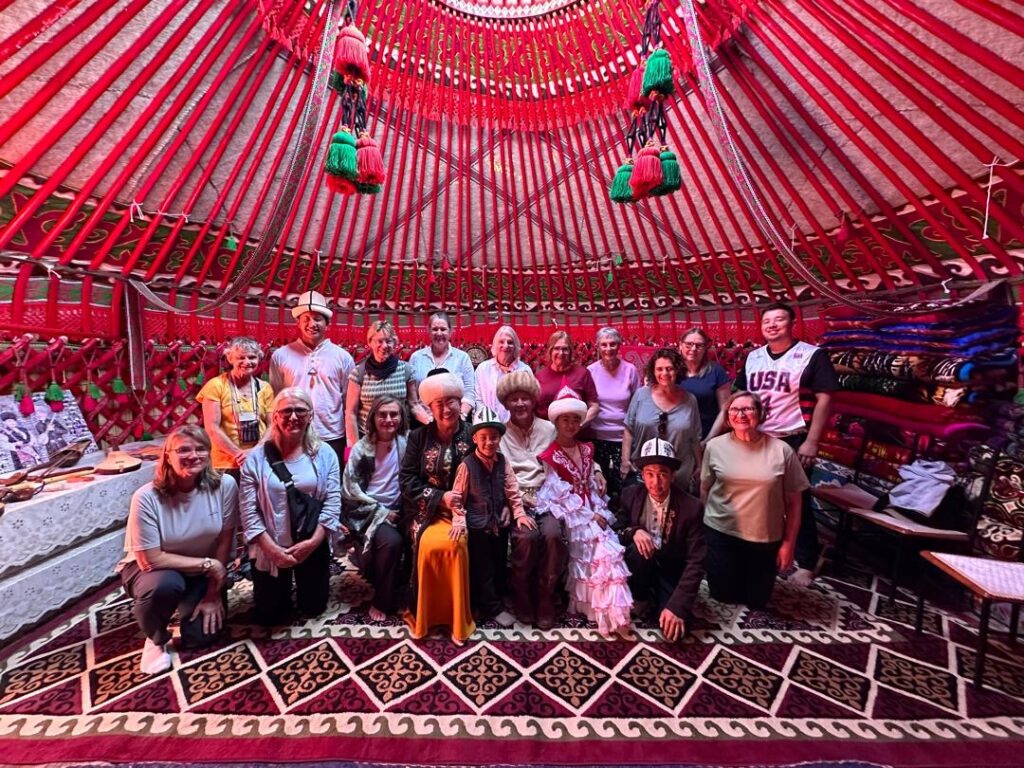
Often, these nomadic families will invite us to have some snacks and offer us ‘mare milk’. It’s a traditional fermented drink made from horse milk. I usually advise the ladies not to drink it as they’re unused to it and it can sometimes upset their tummies, but the Patchies all really love the experience of being able to come and know the people here, experience their hospitality and see how beautiful the landscapes of this region are.
Do you have any tips for guests to help them prepare for this adventure?
Yes, the climate can change sharply so they should bring an umbrella and a little rain jacket. Even though the forecast might be around 25-26 degrees it can be different in five minutes, as the weather can be very changeable when we’re driving in the areas with high elevation.
And don’t be shocked with the amount of food you will be offered! The portion sizes are really huge compared to what Australians and New Zealanders are used to, it’s just part of our culture and how we show our hospitality.
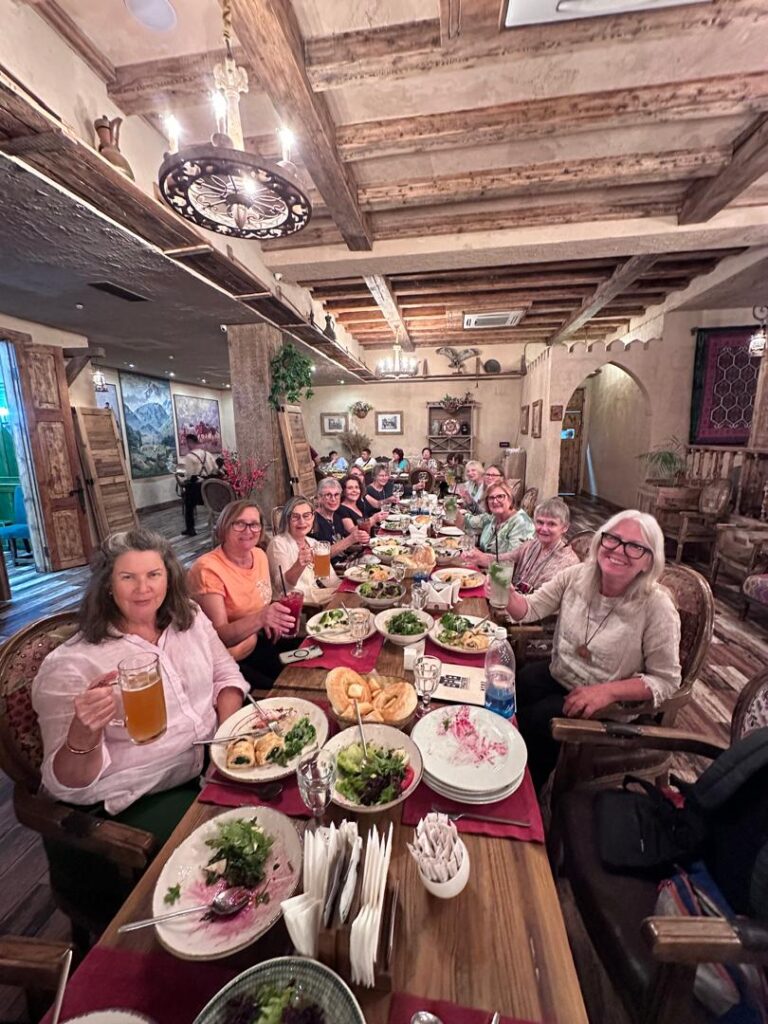
Another tip about our cuisine that people should be aware of, is that meat is served fully cooked through here. It’s considered very disrespectful to have meat ‘rare’, or ‘medium rare’. It’s common in Western cultures, but here it’s not something our culture understands. Nomads live high in the mountains so traditionally, our cuisine relied on meat for protein, as we needed to be tough people to survive. Agriculture came later, with the Russian Empire.
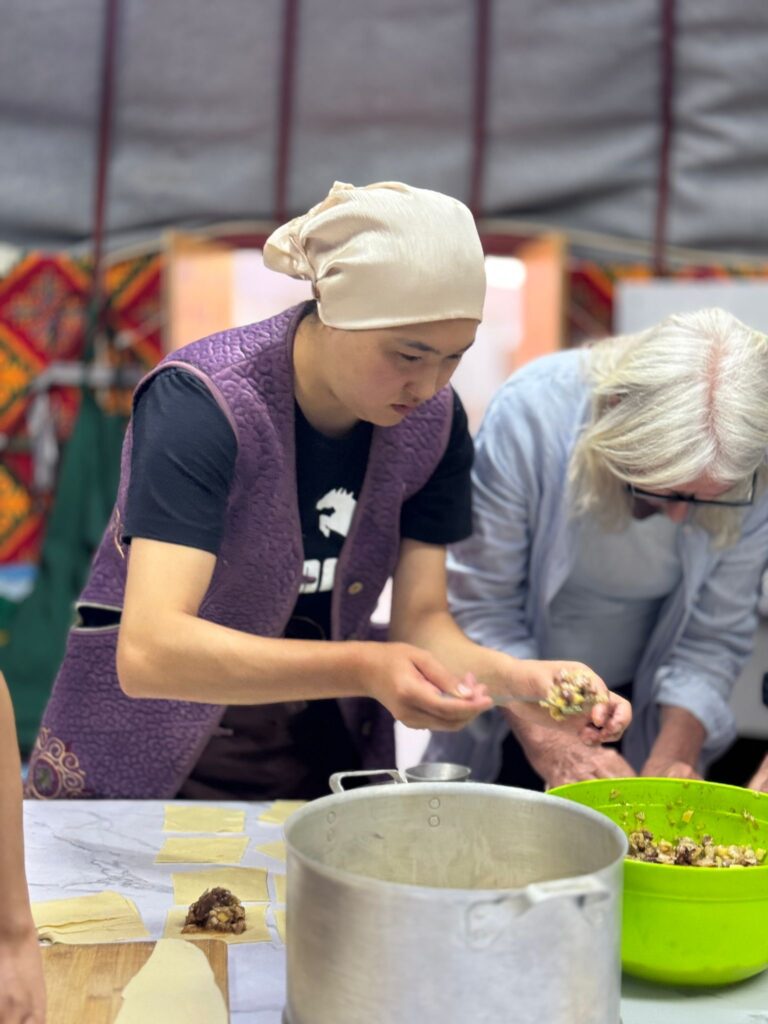
The food across all of the Stans is not that different though dishes might have different names. There are influences from so many different small ethnic groups like the Dungan and Uighur and other countries too; Moldova, the Ukraine, Germany, from Stalin’s regime and the Russian Empire. Everything is combined because in Kyrgyzstan, we’re the kids of the Russian Empire.
What handicrafts can our Patchies hope to find to bring home as souvenirs from Kyrgyzstan & Kazakhstan, and is haggling expected?
Yes, haggling is expected in bazaars and in this region. They’ll find handicrafts made from silk, felt, wood and leather and pottery.
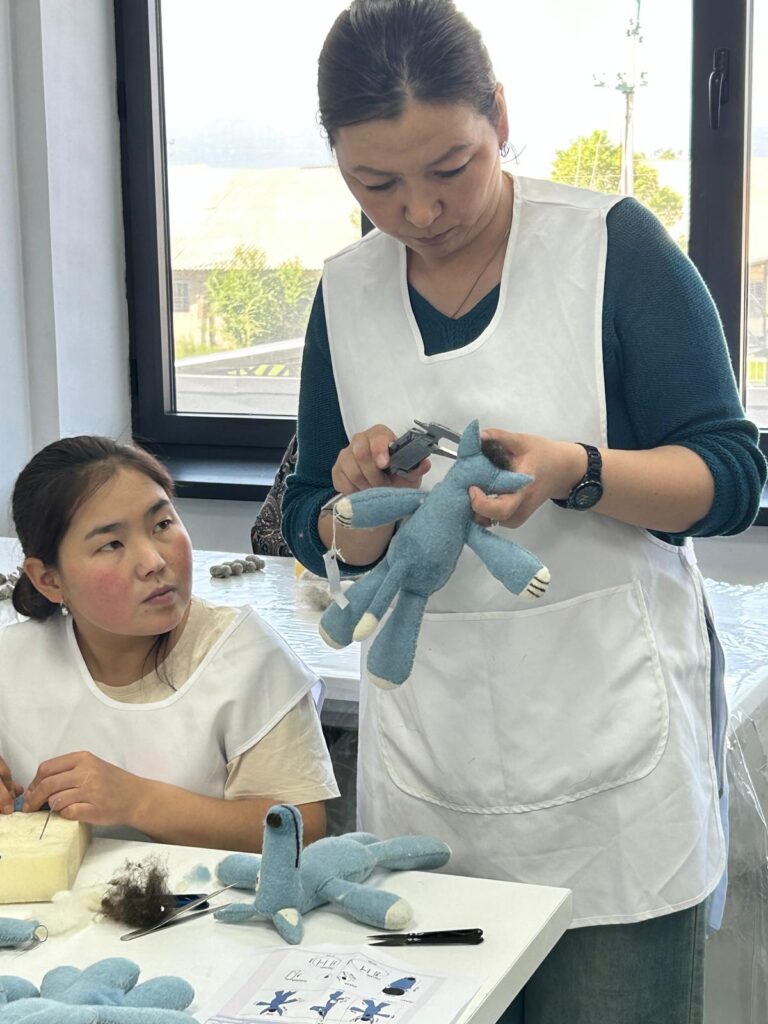
Often Patchies will buy Christmas tree decorations or toys made from felt and little musical instruments called a ‘komuz’, which is a common instrument in Kyrgyzstan. And of course carpets. Most of the time they love to buy carpets and rugs! These take a while to get delivered back to Australia and New Zealand (sometimes it can take two-months), but our Patchies shouldn’t worry because they will eventually get there!
Do you have a favourite memory or experience you’ve had as a guide?
I enjoy every minute of my trips! I don’t accept it as a job because when you truly love something it just works and it’s fun.
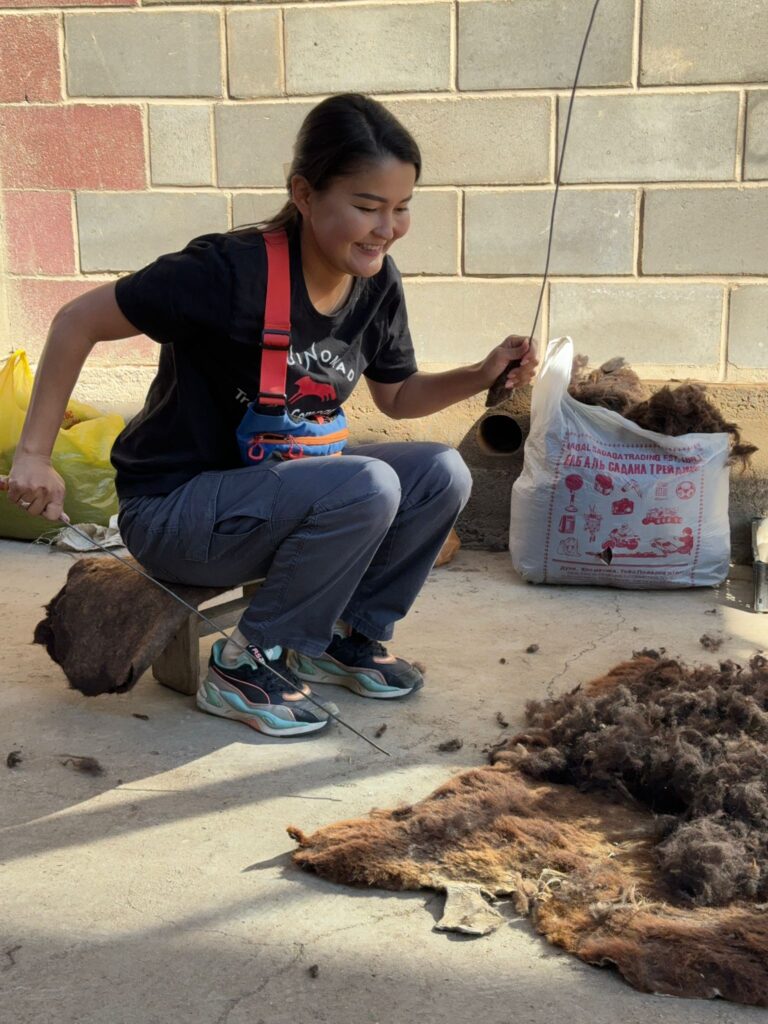
I love dancing and especially swimming in Issyk Kul lake which the ladies really love too. I have many favourite experiences but I’d say it’s when we come to a place where we all have a glass of wine and everyone just starts joking, laughing and really getting to know each other.
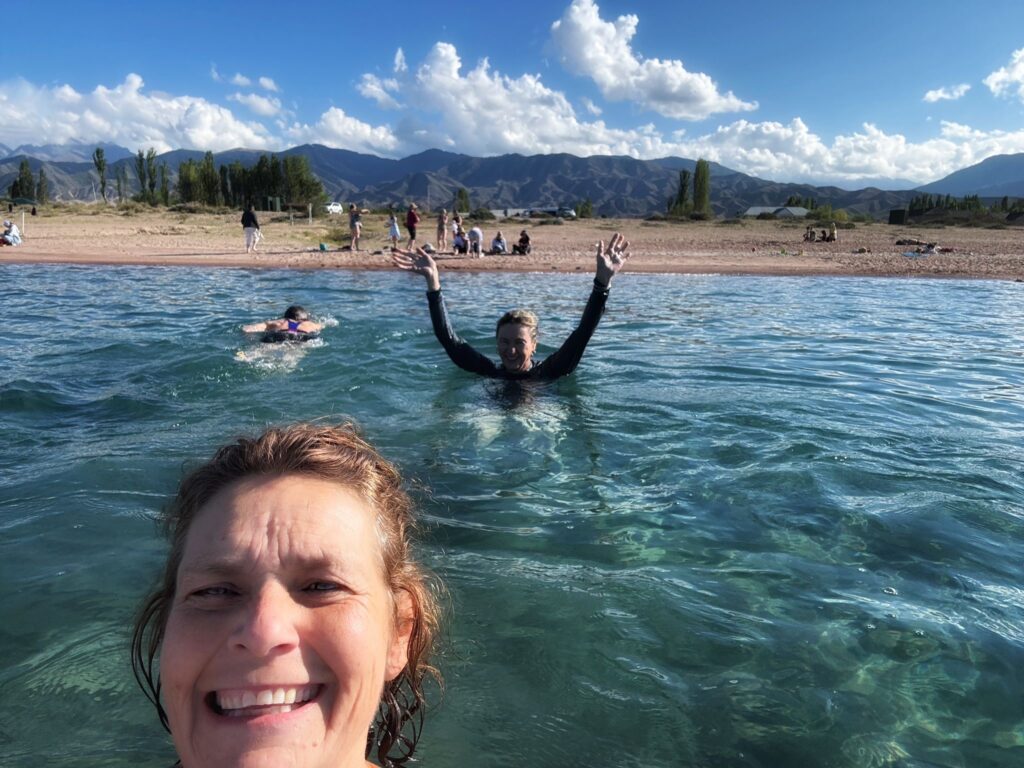
I imagine it’s a tough day then when you have to say goodbye to the Patchies…
Yes, we’ve spent quite a long period of time together and you start to feel like family so when you say goodbye, it’s always tearful at the farewell dinner. We try to dance and share lots of photos and have really big fun but it’s sad too, because for some, that’s the end of their travels. Then there might be others who are sad but excited at the same time because they’re heading off on new adventures in other countries. I have to admit, it’s really hard!
What do you love most about being a guide?
I enjoy everything to be honest but it would be meeting people, interacting with them and hearing their stories. I love seeing their faces when they’re really happy.
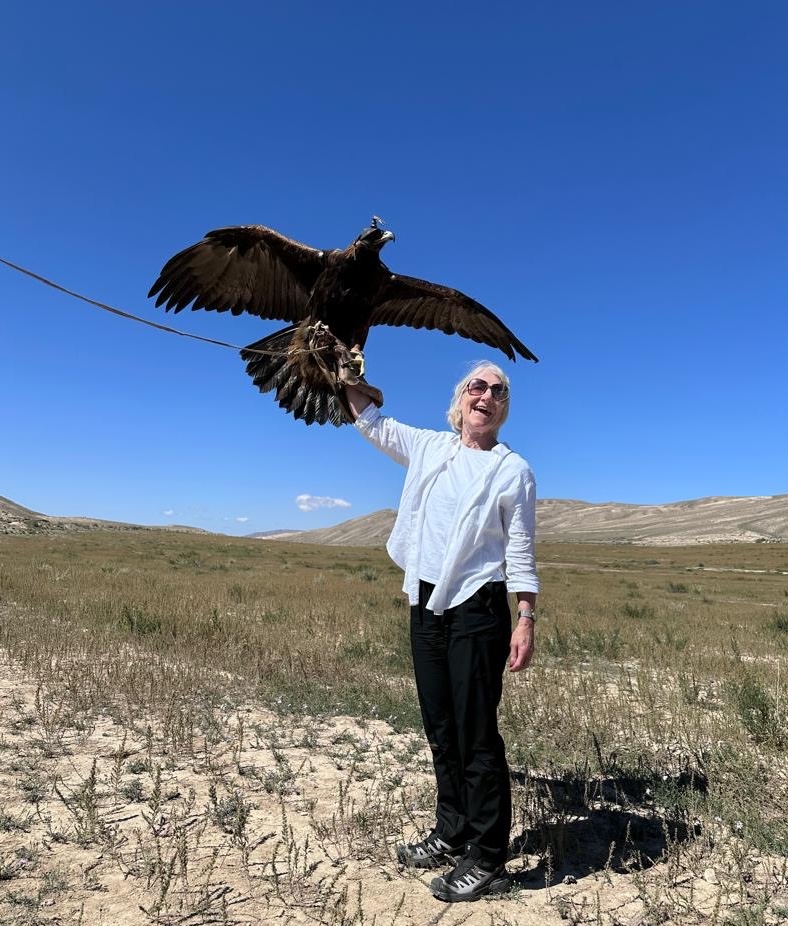
Like when they pat the eagle at our golden eagle experience. My god, this is just a highlight for everybody! To be in this beautiful landscape and to pat the bird. Some people even cry and are overwhelmed with the beauty and kindness of the areas they’re visiting. I just love giving them that experience and knowing that they’re really happy to have made the decision to make it all the way over here and have learned and discovered new things.
Do you have any advice for anyone thinking of joining our Stans adventure, and what would you like to say to our Patchies who you’ll be meeting in 2025?
You’re brave enough!
It’s a really nice place to visit and there’s nothing to be worried about. Just relax, bring positive energy and an open mind to discover new things. You’ll discover a lot about yourself too and you’ll make really good memories. Buckle up and be ready for an adventure!
Are you curious to learn more about the nomads of Kyrgyzstan? Here’s a book Almadai recommends and if you’re feeling really brave, here’s a popular traditional folk song she’s shared so you can try dancing along!
Want to find out more about our 23-Day Silk Road & Stans adventure dates and availability? Get in touch with us here and one of our super knowledgeable BMs will reach out with all the juicy details!